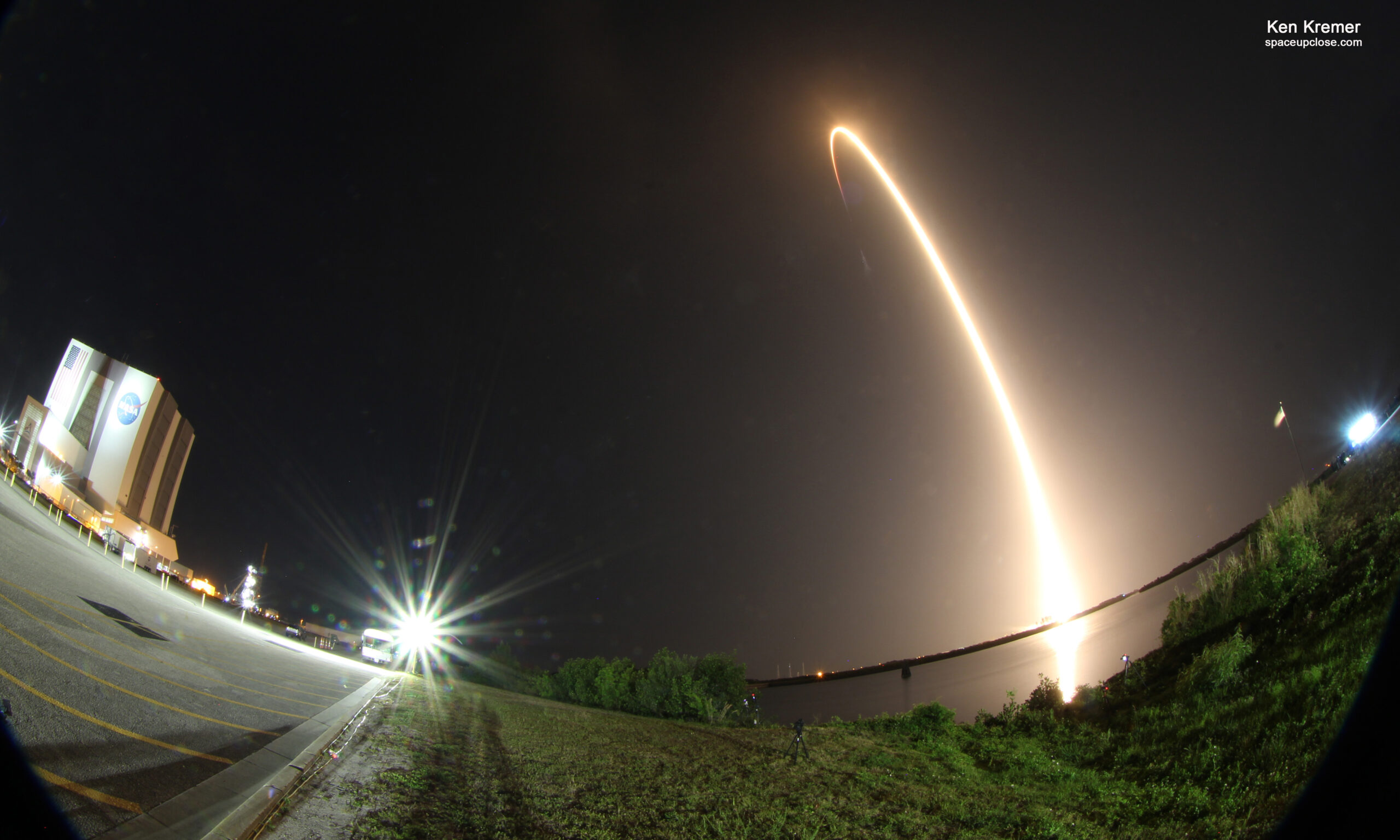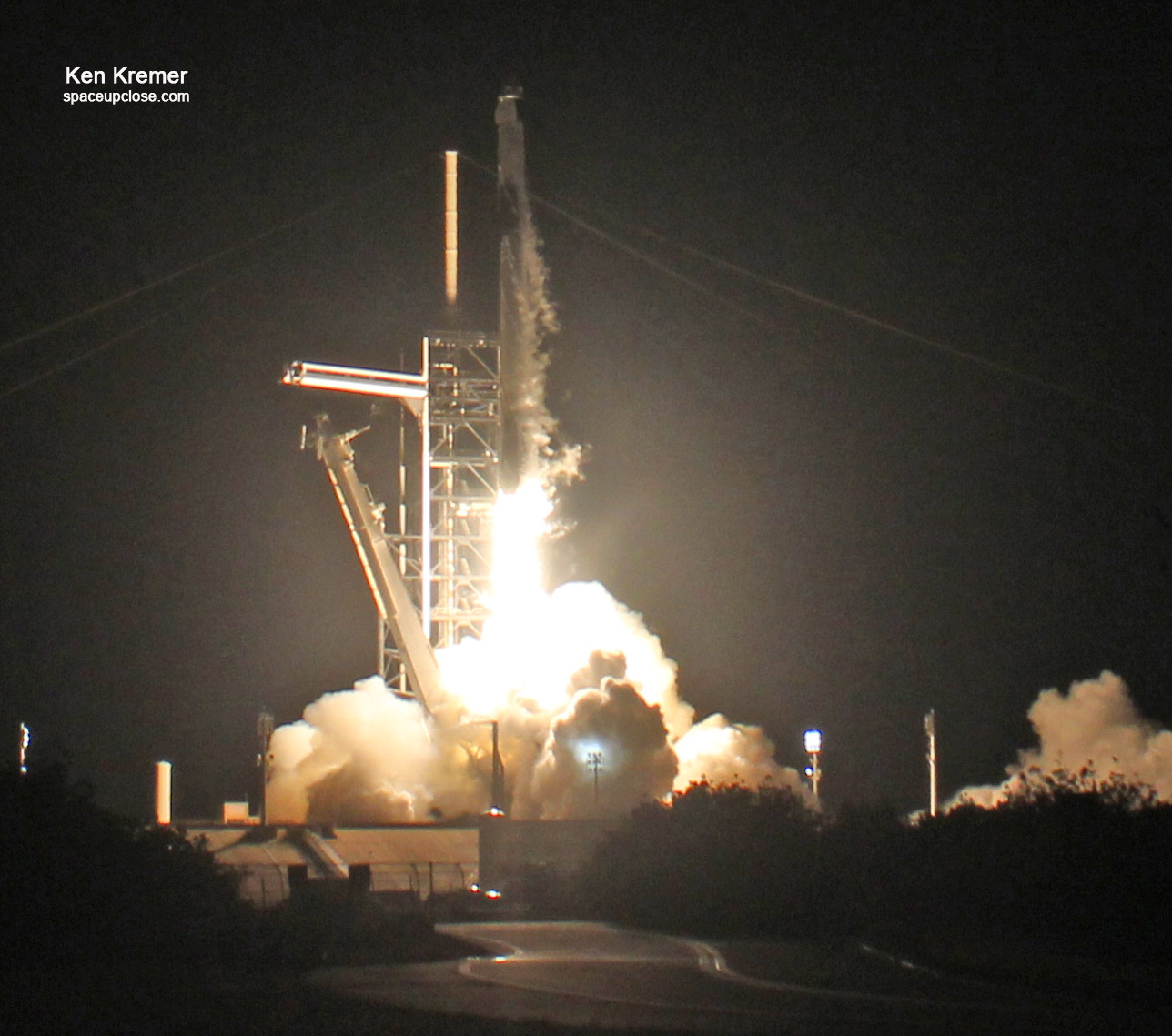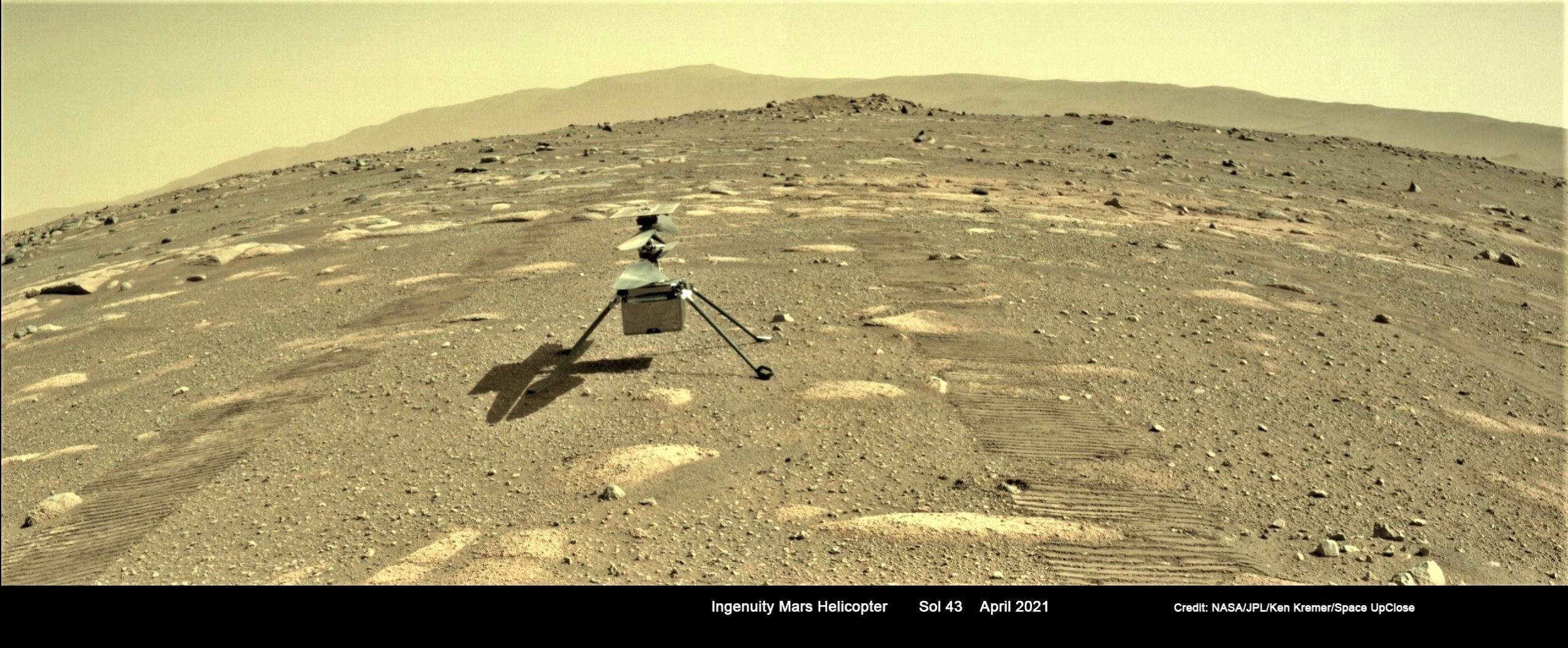
For SpaceUpClose.com & RocketSTEM
CAPE CANAVERAL, FL – Touchdown confirmed! NASA’s experimental solar powered Ingenuity Mars Helicopter has been safely deployed to the ‘Martian Flight Field’ after being carefully dropped from attach point on the belly of the Perseverance rover where its been hanging this past week after completing the methodical step by step unfolding, swing down and deployment of all four graphite composite landing legs – targeting a history making first flight on another world for NET April 11 if all goes well.
For the first time in history an aircraft from Earth rests on the soil of the Red Planet – and it’s truly a magnificent sight to behold!
The $80 million rotorcraft is standing safely upright after being dropped the last 4 inches (10 cm) today, the NASA JPL team reported earlier today, Easter Sunday, April 4, after confirmation was received via the imagery taken on Sol 43 and received back on Earth to the delight of everyone involved in the mission and fans worldwide.
And Ingenuity is now completely on its own – left to its own devices and totally dependent on collecting life giving solar energy from the solay array mounted on top of the tiny 1.6 feet or 19 inches (0.49 meters) tall craft to survive the extremely cold Martian night.
Before cutting the cord the team had to ensure that Ingenuity was operating perfectly and all charged up with its solar panels because the copter must survive utterly harsh and frigid Martian nights where overnight temperatures at Jezero Crater plunge down to Antarctica-like temperatures of -130ºF (-90ºC).
After the drop the team had only 25 hours to complete the check outs and charge the six lithium-ion batteries and drive away 5 meters so that Ingenuity could start charging the battery with solar power before Red Planet nightfall at Jezero Crater
The goal is to conduct a history making ‘Wright Brothers’ first flight moment with the agencies experimental craft on Mars no earlier than April 11 – aiming to make the first attempt at powered, controlled flight of an aircraft on another planet.
Data and imagery will be received back on Earth the next day, April 12.
And Ginny has to do all that in the ultra-thin Martian atmosphere less than 1% as dense as Earth’s.
“#MarsHelicopter is on the flight field!” Perseverance tweeted.
“#MarsHelicopter touchdown confirmed! Its 293 million mile (471 million km) journey aboard @NASAPersevere ended with the final drop of 4 inches (10 cm) from the rover’s belly to the surface of Mars today. Next milestone? Survive the night,” the NASA JPL team confirmed via tweet with an image.
#MarsHelicopter is on the flight field! https://t.co/sJofFpDnrc
— NASA's Perseverance Mars Rover (@NASAPersevere) April 4, 2021
The images confirming the drop to the Red Planet’s surface and standing on all four legs were taken by rear hazcam camera on the back of the rover located below the belly and providing a fisheye view of the helicopter scene and sent back today.
NASA tweeted the left rear hazcam single image taken by Perseverance.
The two counter rotating blades and solar panel are easily visible in the post-drop imagery

Therefore, I stitched two images from the Perseverance right rear hazcam camera raw images into a new Sol 43 mosaic to show a different perspective of Ingenuity on Mars – and shown as lead image above/below.

The right rear hazcam images were taken at 15:14:19 and 15:14:28 on Sol 43 on April 4, 2021.
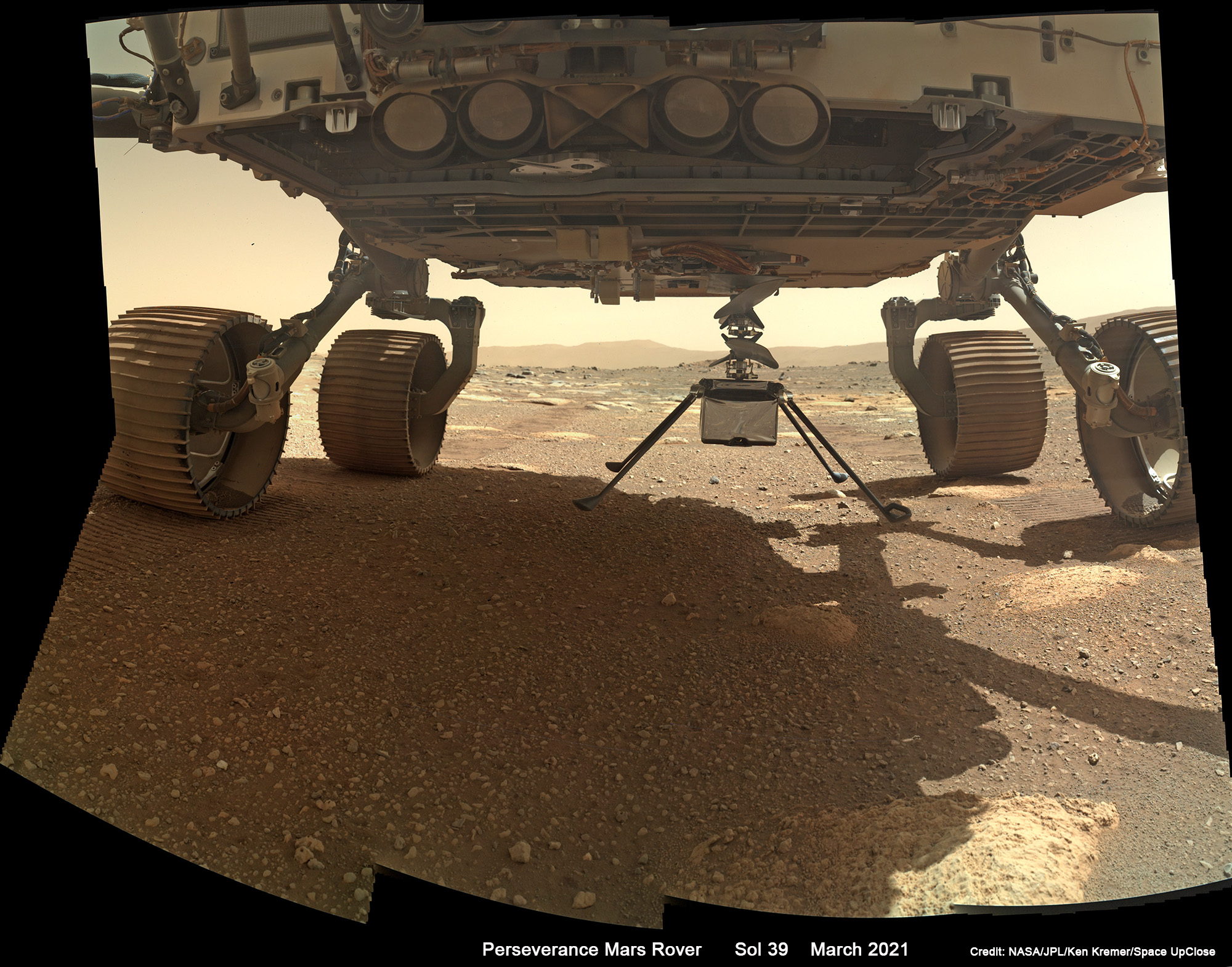
The science and engineering team now needs the rest of this week to complete testing and checkouts of the delightfully diminutive 4 pound (1.8 kg) Ingenuity copter, nicknamed ‘Ginny’ – now poised atop the Red Planet at the ‘airfield‘ at the Jezero Crater landing site where Perseverance safely and softly touched down on Feb. 18, 2021 after a seven month interplanetary voyage from Earth
The Ingenuity Mars Helicopter is a technology demonstration experiment aboard Perseverance.
Ginny is not part of the science mission focused on astrobiology and the search for signs of past life on the Red Planet.
Ingenuity is the first Helicopter to ride to Mars and the first to be touched by Martian air.
Since launching in 2020 and since landing on Mars it was stowed on the belly and received its charge from the rover’s nuclear power supply – until today April 4.
With Ingenuity now deployed on Mars’ surface its its six lithium ion batteries will be charged solely by the helicopter’s own solar panel.
While attached to the belly, Ingenuity’s delicate components and sensitive electronics were maintained at a balmy 45 F (7 C) to protect them from harm of bitter cold temperatures
But now detached and on the Martian surface the Ingenuity electronics are maintained cooler at 5 F (-15 C) or lower to conserve precious, limited power.
If Ingenuity survives the cold Martian nights during its preflight checkout, the team will proceed with testing.
“The Ingenuity team will be anxiously waiting to hear from the helicopter the next day,” wrote Bob Balaram, Chief Engineer for the Mars Helicopter Project at NASA’s Jet Propulsion Laboratory, in a pre-drop blog post April 2.
“Did it make it through the night? Is the solar panel working as expected? The team will check the temperatures and the battery recharge performance over the next couple of days. If it all looks good, then it’s onto the next steps: unlocking the rotor blades, and testing out all the motors and sensors.”
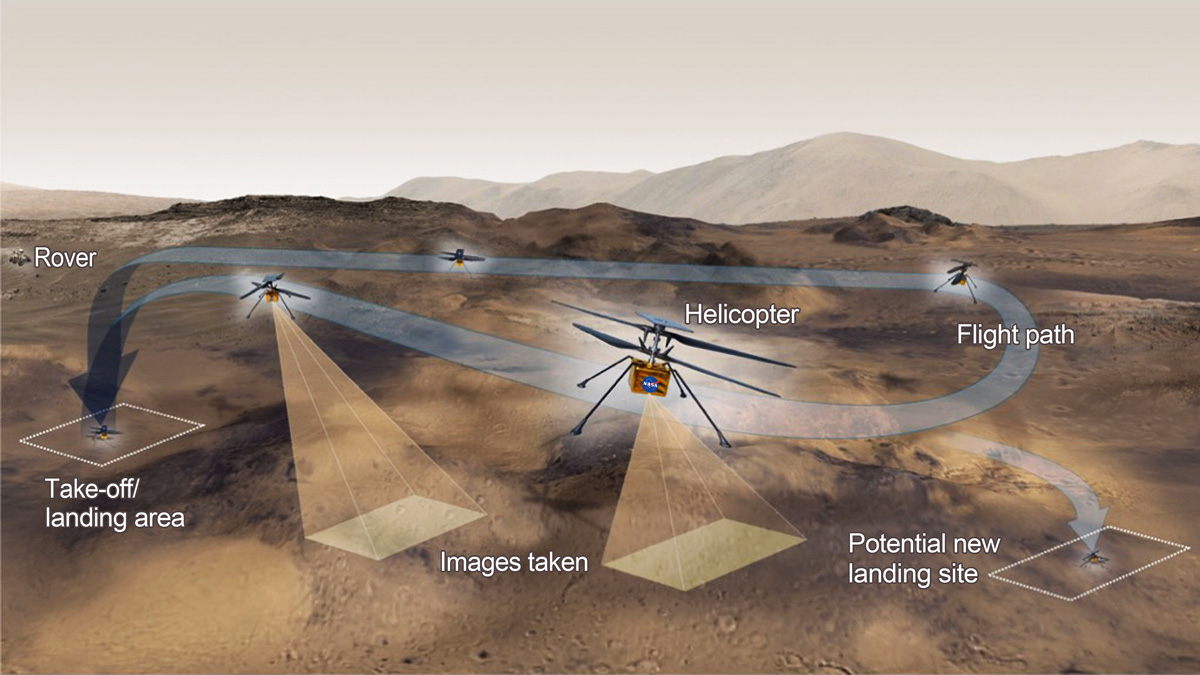
Now that its deployed, Ingenuity will have 30 Martian days, or sols, (31 Earth days) to conduct its test flight campaign of up to five test flights.
It is equipped with two counter rotating blades for lift spinning at about 2,400 rpm and two cameras.
After a pictorial search with the high resolution mast mounted cameras the science and engineering team located a ‘helipad’ which they commanded Perseverance to travel to and deploy Ingenuity onto for the history making test flight campaign in the extremely thin atmosphere of Mars that is less than 1% as dense as Earths.
But the challenge is great because Mars still has significant gravity about 1/3 of Earth with little atmospheric density for lifting.
The airfield is about 10 meters x 10 meters (33 feet x 33-feet) in size and chosen as prime real estate for the test flight because it is smooth, flat and relatively free of obstructions like rocks, large boulders and slopes which could interfere with a safe landing on the four legs.
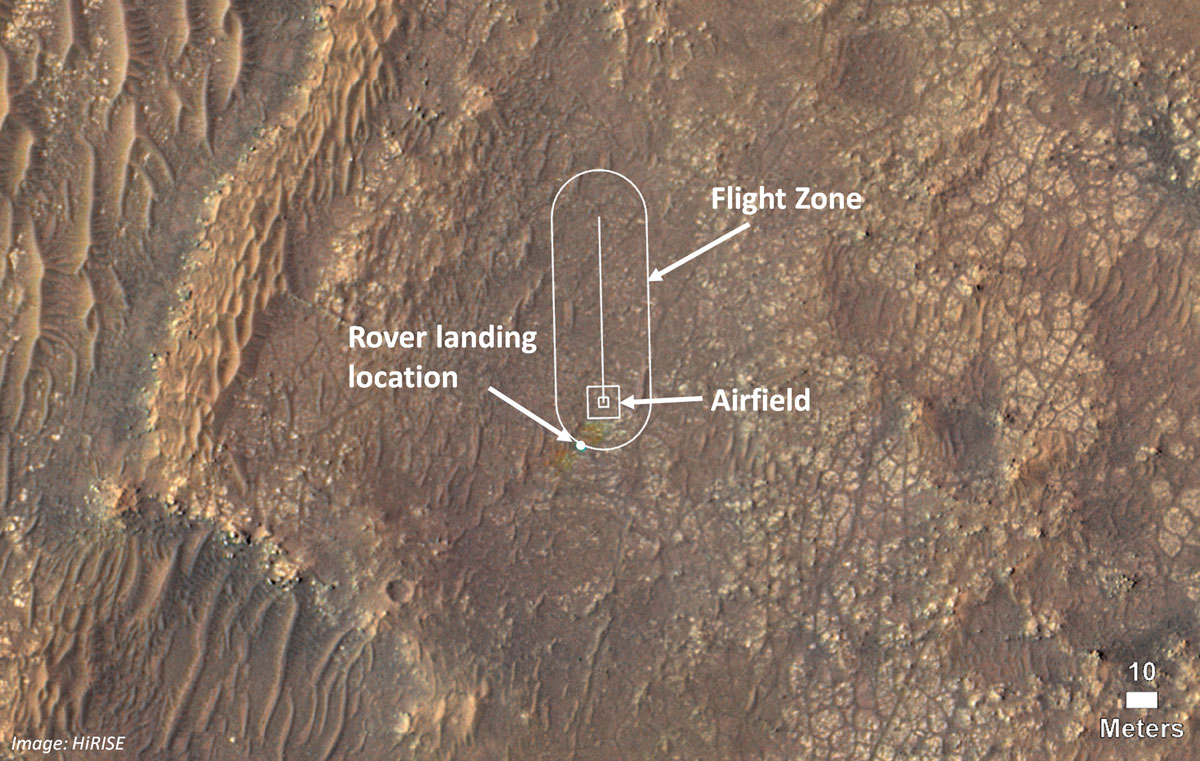
Some small rainbow-like color distortions (which do not actually appear on the terrain of Mars) are seen in this image near the landing location because of the way pre- and post-landing color images were merged. Credit: NASA/JPL
After completing the planned six sol deployment and unfolding and dropping Ingenuity the last 4 inches (10 cm) to Mars surface, Perseverance drove away to a distance of about 16 feet (5 meters) and to take images to confirm that the helicopter is standing upright on 4 legs on Jezero crater floor and that both helicopter and rover are communicating via their onboard radios.
This milestone also initiates the 30-sol clock during which time all preflight checks and flight tests must take place, declared the team.
The first flight targeted for NET April 11 will be the most important since it will be the first demonstration of powered flight on another world – if all goes well.
“The first flight is special. It’s by far the most important flight that we plan to do,” said Håvard Grip, Ingenuity chief pilot at a media briefing. “It will be the first powered flight by an aircraft on another planet.”
During the first test flight Ingenuity will rev up its rotors to 2,537 rpm. If all checks out well it will climb at a rate of about 3 feet per second (1 meter per second) to about 3 meters (10 feet) above the surface and hover in place for about 30 seconds while turning
Then Ingenuity will descend and touch back down on the Martian surface on its four landing legs.
Four more tests of increasing complexity will follow depending on the results and analysis by the team
NASA and the JPL team running the mission are limiting Ingenuity to only a 30 sol mission because the rover needs to move on from this technology demonstration experiment to its primary science task of astrobiology aimed at searching for signs of ancient alien microbial life and gathering soil and rock samples at Jezero crater for eventual return to Earth in a decade or so.
Watch this NASA JPL trailer illustrating the Ingenuity mission:
Video caption: NASA’s Mars Helicopter, Ingenuity arrived at the Red Planet on Feb. 18, 2021. Its mission: to demonstrate the first powered flight on another world.
The ‘daunting milestones’ to begin the Ingenuity deployment began two weeks ago on Sol 30 (March 21, 2021) after Perseverance was commanded to eject the guitar case-shaped graphite composite debris shield cover that protected Ingenuity during EDL landing and was dropped flat onto the Martian surface directly underneath her and between the six wheels.
See my Sol 30 mosaic below illustrating the scene with the 1st look at NASA’s Mars Ingenuity helicopter unveiled and folded up and attached to the belly of the rover.
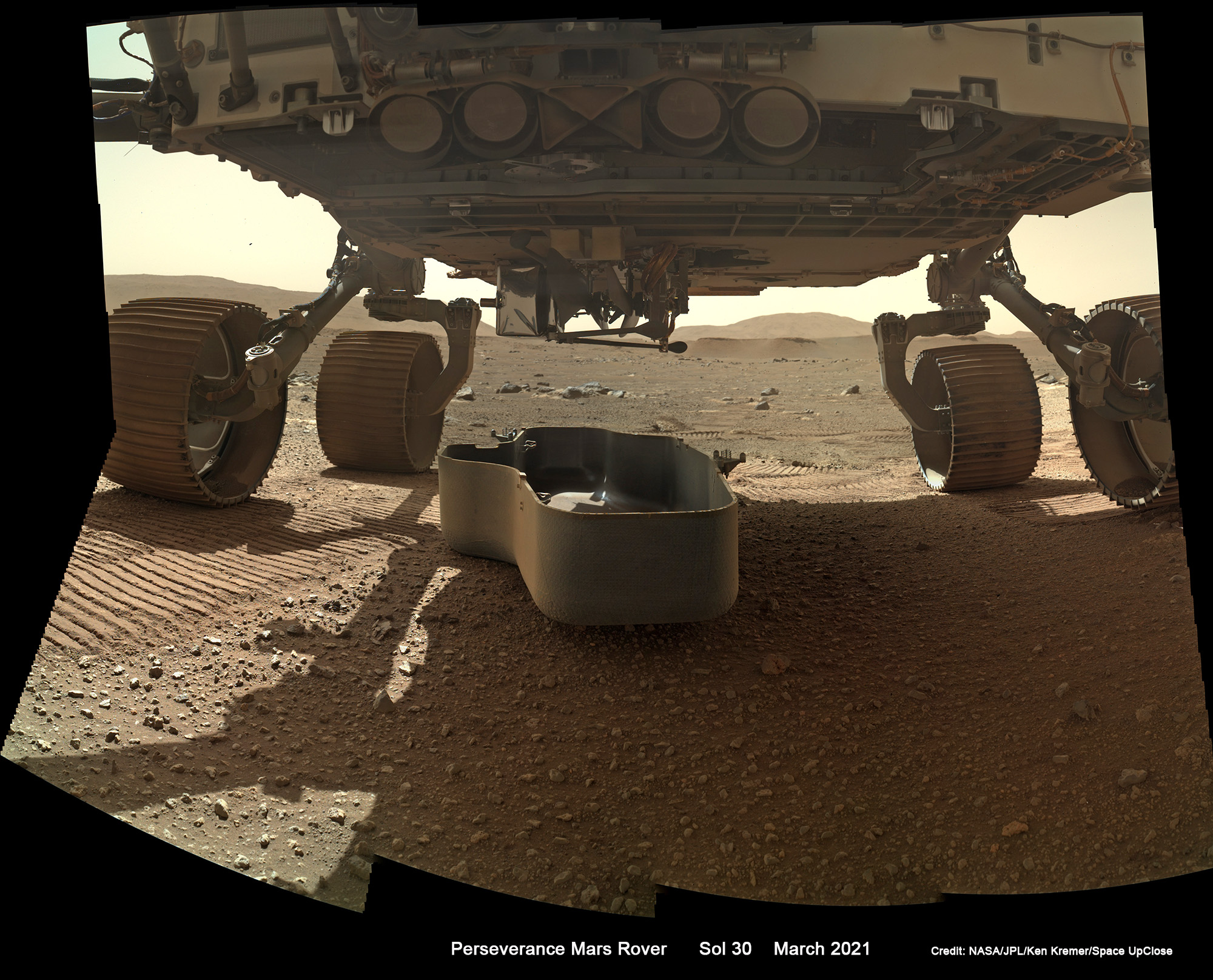
The rover then drove away to the ‘airfield’
Next on Sol 37 released the locking mechanism at the belly attach point on the belly of NASA’s Perseverance – that began the irreversible start to the deployment with the spring-loaded unfurlment of the four landing legs.
Swing down and landing legs unfolding continued on Sols 38 and 39 – see my mosaic herein.
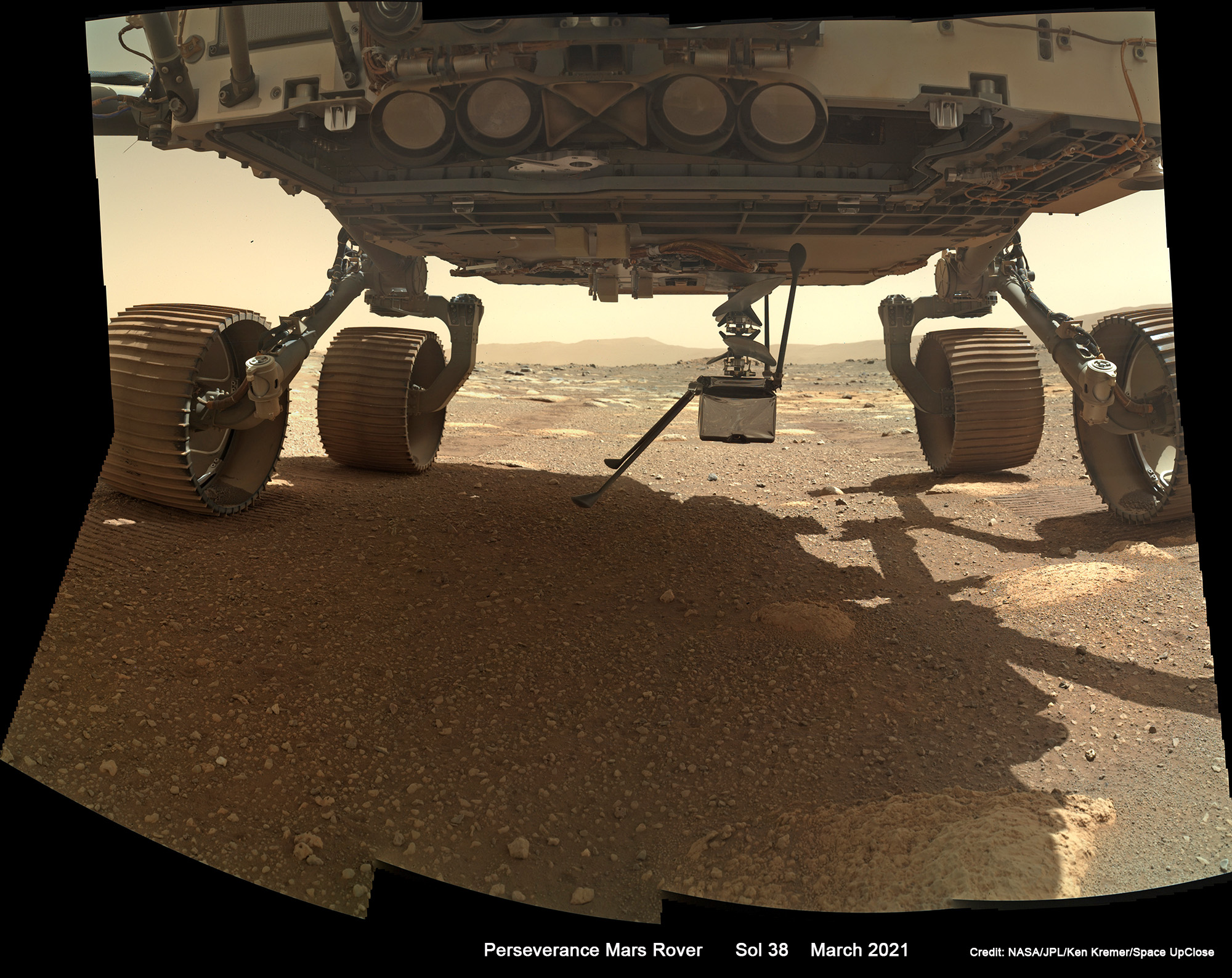
My commentary about the search for life on Mars and the deployment of the Ingenuity Helicopter was featured in a live interview on March 30 on News Nation Cable TV News Network on ‘The Donlon Report’ illustrated with my Mars mosaics.
https://twitter.com/TheDonlonReport/status/1377282034775769092
The solar powered Ingenuity helicopter is a technology demonstration experiment aimed at attempting the first flight on Mars.
The four legged Ingenuity has a mass of about 4.0 pounds (1.8 kilograms) and stands 1.6 feet or 19 inches (0.49 meters) high.

Meanwhile Perseverance has been busy gathering high resolution imagery of her breathtaking surroundings nearby and off into the distance to the stunning walls of Jezero Crater some 2 miles (3 km) away.
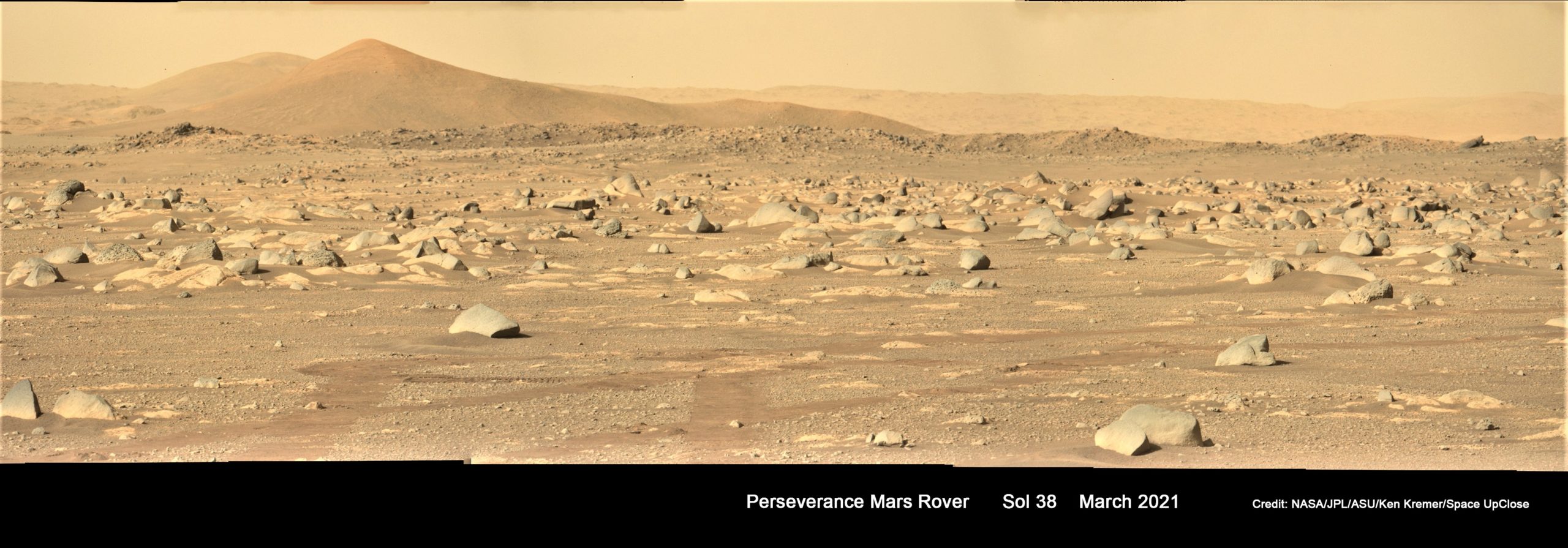
Check out the spectacular Jezero Crater scenery in my new mosaics of images taken by the robots mast mounted Mastcam-Z camera on Sols 36 and 38 – see below.
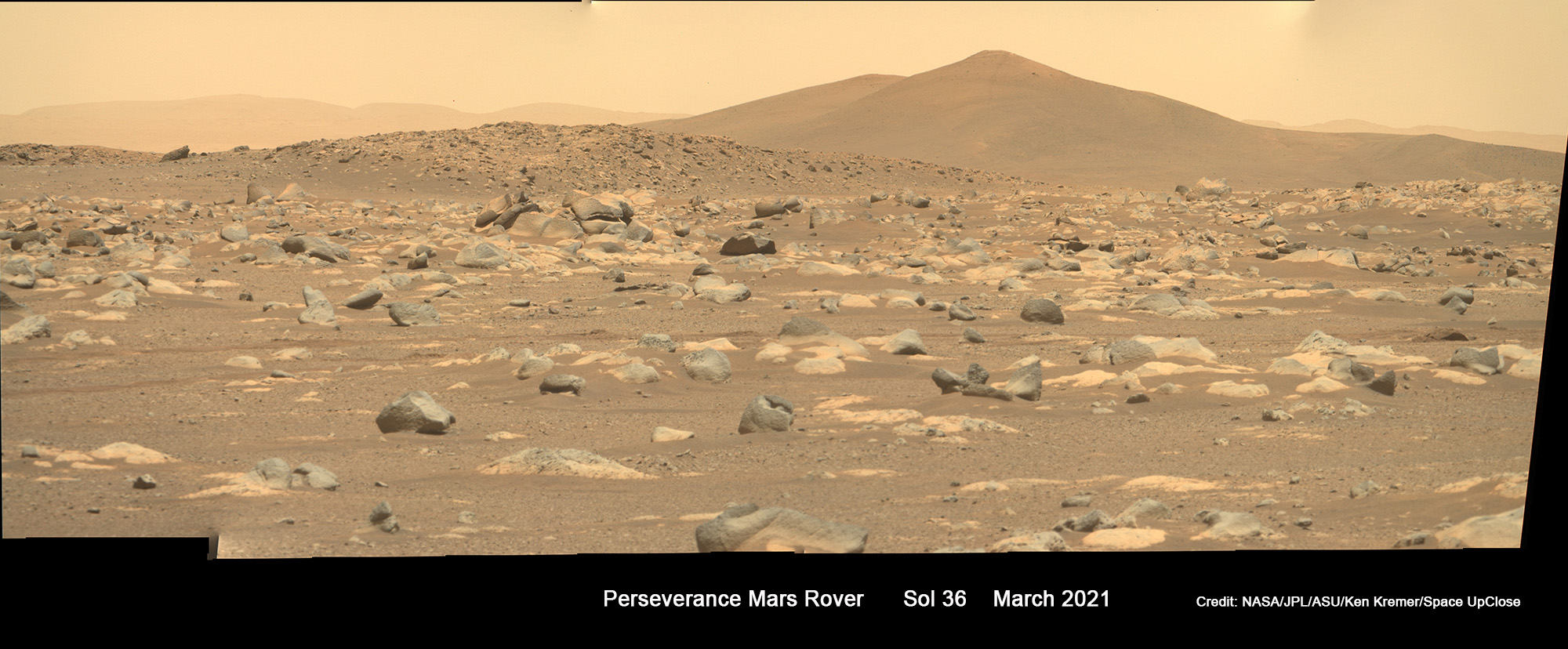
Watch our live and complete ‘Stay Curious’ with live Perseverance landing commentary Feb 18, 2021 as well as March 22 mission update and earlier programs on Mars Mania on Feb 12.
https://www.facebook.com/175507880819/videos/2694057200904814
https://www.facebook.com/175507880819/videos/752176242375043
https://www.facebook.com/175507880819/videos/3246699658764085
Watch Ken’s continuing reports about Mars 2020 Perseverance and Curiosity rovers, Artemis and NASA missions, SpaceX, Starlink, Commercial Crew and Starliner and Crew Dragon and onsite for live reporting of upcoming and recent SpaceX and ULA launches including Crew 1 & 2, Demo-2, ISS, X-37B, Solar Orbiter, NRO spysats and national security missions and more at the Kennedy Space Center and Cape Canaveral Space Force Station.
Stay tuned here for Ken’s continuing Earth and Planetary science and human spaceflight news: www.kenkremer.com –www.spaceupclose.com – twitter @ken_kremer – email: ken at kenkremer.com
Dr. Kremer is a research scientist and journalist based in the KSC area, active in outreach and interviewed regularly on TV and radio about space topics.
………….
Ken’s photos are for sale and he is available for lectures and outreach events
Ken has created hundreds of widely published Mars rover mosaics and lectures also about NASA’s Mars rovers
Please consider supporting Ken’s work by donating at Patreon:
https://www.patreon.com/kenkremer
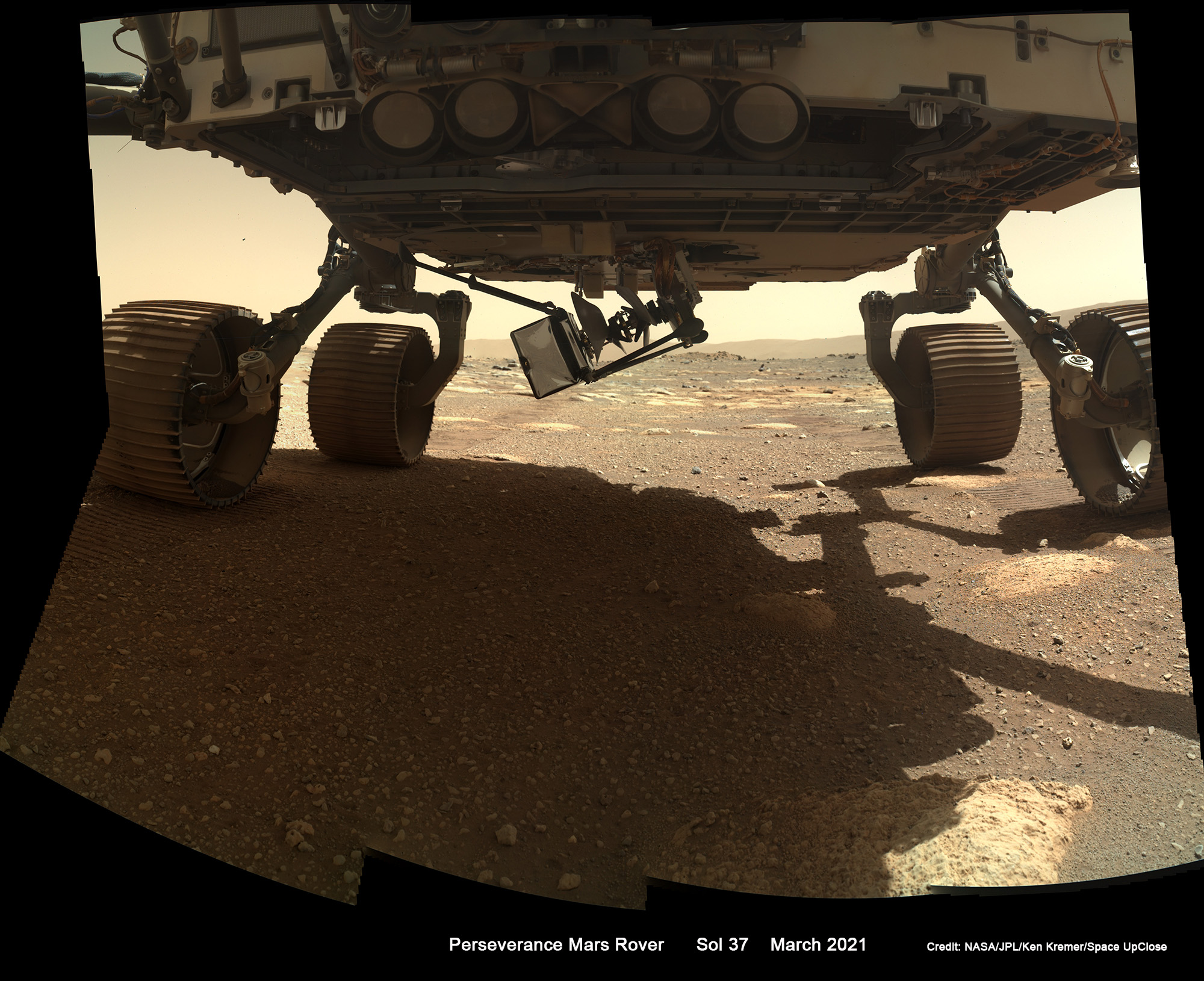
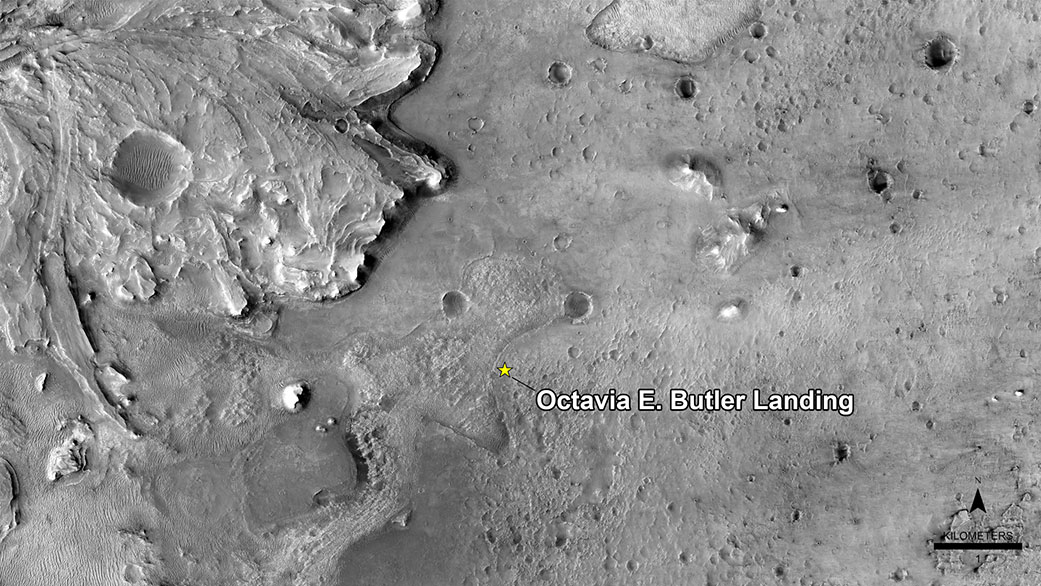
x



